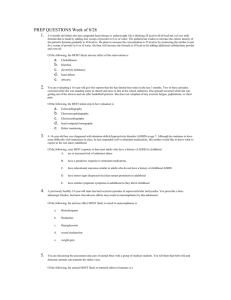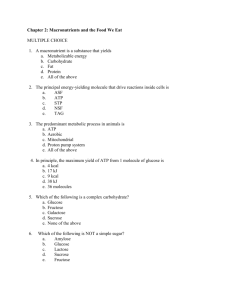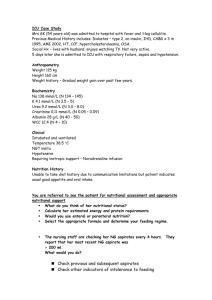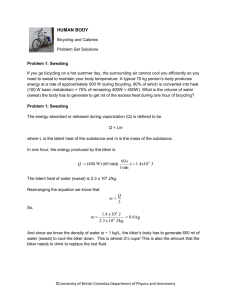Food Web/Pyramids Card Sort
advertisement
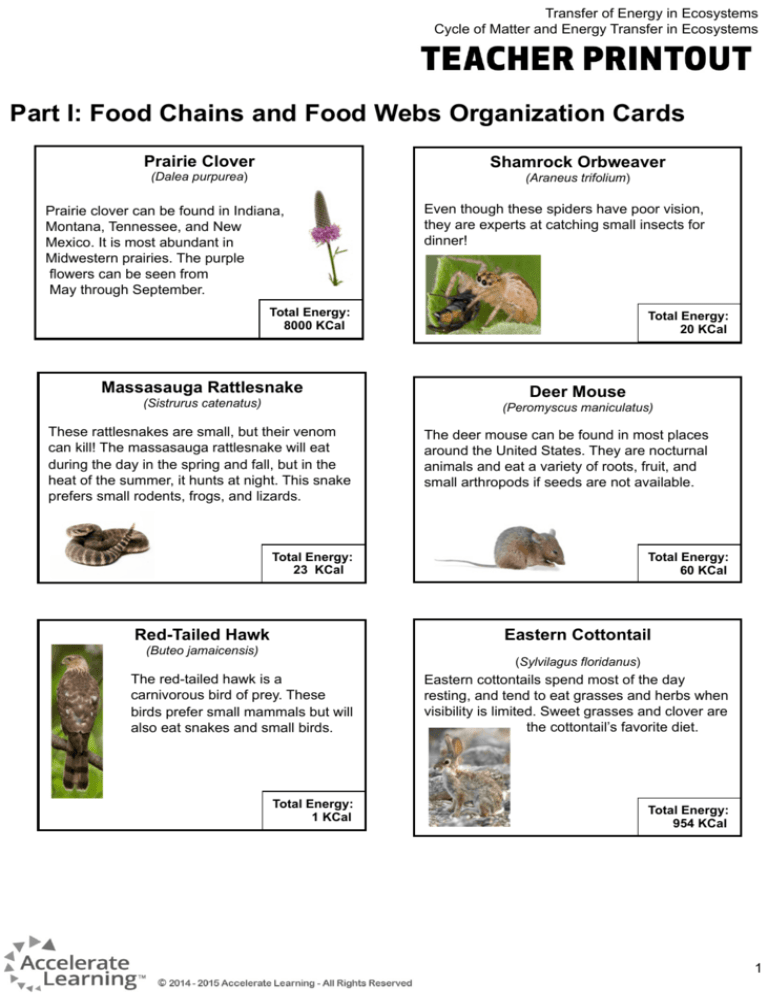
Transfer of Energy in Ecosystems Cycle of Matter and Energy Transfer in Ecosystems Part I: Food Chains and Food Webs Organization Cards Prairie Clover Shamrock Orbweaver (Dalea purpurea) (Araneus trifolium) Prairie clover can be found in Indiana, , Montana, Tennessee, and New Mexico. It is most abundant in Midwestern prairies. The purple flowers can be seen from May through September. Even though these spiders have poor vision, they are experts at catching small insects for dinner! Total Energy: 8000 KCal Massasauga Rattlesnake (Sistrurus catenatus) Total Energy: 20 KCal Deer Mouse (Peromyscus maniculatus) These rattlesnakes are small, but their venom can kill! The massasauga rattlesnake will eat during the day in the spring and fall, but in the heat of the summer, it hunts at night. This snake prefers small rodents, frogs, and lizards. The deer mouse can be found in most places around the United States. They are nocturnal animals and eat a variety of roots, fruit, and small arthropods if seeds are not available. Total Energy: 23 KCal Total Energy: 60 KCal Eastern Cottontail Red-Tailed Hawk (Buteo jamaicensis) (Sylvilagus floridanus) The red-tailed hawk is a carnivorous bird of prey. These birds prefer small mammals but will also eat snakes and small birds. Total Energy: 1 KCal Eastern cottontails spend most of the day resting, and tend to eat grasses and herbs when visibility is limited. Sweet grasses and clover are the cottontail’s favorite diet. Total Energy: 954 KCal 1 Transfer of Energy in Ecosystems Cycle of Matter and Energy Transfer in Ecosystems Part I: Food Chains and Food Webs Organization Cards Wild Rye Skunk (Elymus glaucus) (Mephitis mephitis) Wild rye is a common prairie grass that produces a large amount of seeds. This grass can grow over one meter high and is a main source of food for herbivores in open plains. areas. Skunks are omnivorous, meaning they eat both plants and animals. They will eat many things, including insects, bird eggs, and small rodents, as well as seeds, nuts, and berries. Skunks are omnivores, so they can actually be classified in more than one trophic level. Total Energy: 5000 KCal Western Meadowlark (Sturnella neglecta) Total Energy: 91 KCal Switchgrass (Panicum virgatum) This relative of the blackbird is common on the prairies. Its bright yellow chest is one of its more distinctive characteristics. The meadowlark feeds on seeds and insects and will use the tall prairie grasses to build nests on the ground. Total Energy: 75 KCal This hardy grass is common on the prairie. It has deep roots and coarse leaves to help it survive drought and other unfavorable conditions. Total Energy: 5000 KCal Northern Mole Cricket Coyote (Neocurtilla hexadactyla) (Canis latrans) Coyotes are superior hunters and usually work in pairs. Coyotes will eat many things but prefer small mammals. They have been observed targeting ground-nesting birds. Total Energy: 1.5 KCal Mole crickets can be found throughout the United states. They are about 20 mm long and have powerful legs. Their back legs are useful for jumping, and their strong front legs help them burrow in the soil so they can eat underground stems and roots. Total Energy: 518 KCal 2 Transfer of Energy in Ecosystems Cycle of Matter and Energy Transfer in Ecosystems Part I: Food Chains and Food Webs Organization Cards, continued Milkweed Plant (Asclepias syriaca) Milkweed is an important food source for bees, butterflies, and other insects. It has velvety leaves and can grow 1 to 1.5 meters high. Total Energy: 6500 KCal Dogbane Beetle (Chrysochus auratus) If you find a patch of milkweed on the prairie, you may likely see a dogbane beetle. These insects are about 1 cm long and are iridescent; their color can change depending on the angle of the light! Colors blend and range from bluegreen to copper. The beetles lay eggs in the milkweed and the pupae feed on the roots. Total Energy: 465 KCal Snakeweed Grasshopper (Hesperotettix viridis ) The snakeweed grasshopper is an insect that eats grasses and other plants. The grasshopper will also eat grass seeds such as wheat and rye. Total Energy: 533 KCal 3

